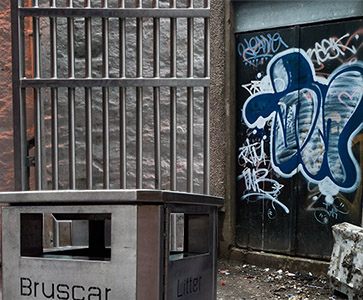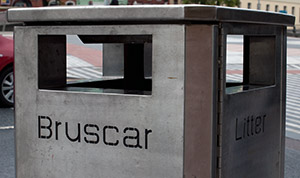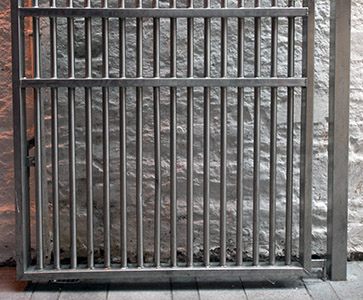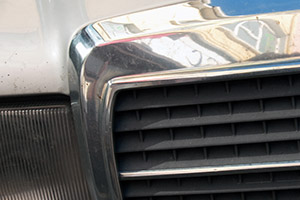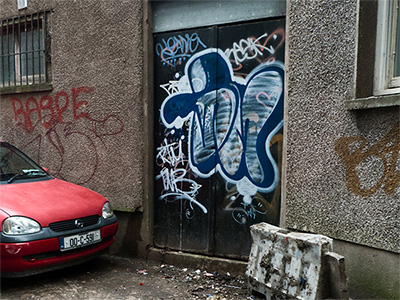To collect sounds for the Cork City Gamelan, I use the Zoom H2 Handy Recorder. It is small, robust and easy to operate at a basic level for field recordings, while providing an extensive set of additional features. It looks like this (catalogue picture):
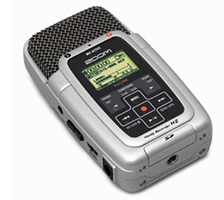
Before I continue: Please note, this is not meant to be a full scale technology review. It really only covers briefly what I find important for the kind of work a sound artist or composer working with field recordings may be interested in.
It has four cardioid microphones built in, one pair facing the front at a 90 degree angle between the two, and one pair facing the rear at 120 degrees between them. It allows me to use either of the two pairs for stereo recordings, or all four mics together to record surround soundscapes. For close-mic recordings, such as my Gamelan Sounds, I use the front, for everything else I use the back.
It uses SD memory cards by default, and can it can also use SDHC cards. My 4 GB SDHC cards hold more than 6 hours of better than CD quality sound recordings. It comes with a 512 MB SD card, which is very important to hang on to, even though it may seem pointless: you’ll need it to update the Operating System – SDHC cards won’t work.
I can set the sensitivity to three discrete basic levels and make manual fine adjustments within each level, or set it to detect the sound level automatically. It can even pause and continue, according to whether it detects a sound or not. For this project, I always use the lowest setting and manual levels adjustment.
It can record PCM audio at up to 24-bit resolution and 96 kHz sample rate! It can also record directly into MP3 files.
The sounds can be sorted into different folders, with the exception of surround sound recordings. Connected to my computer, it mounts as a hard drive, and I can simply copy the files by dragging and dropping them. I can also delete them from my computer, just like any connected external drive. This is quite slow, compared to, say, my camera. A card reader would help. I can also use it as a USB microphone an record directly onto a laptop computer.
It runs on AA size batteries, off the mains via a dedicated power adaptor, or off the USB bus when it is connected to a computer.
I find the dynamic range, clarity and stereo separation superb. The high frequency response is excellent, the low frequency response – let me call it “adequate”. The low pitch sounds are all there, but the level rolls of more than I like and may need some boosting afterwards.
It ships with a wind shield, a little table top stand, and a screw-in handle. It also fits on my camera tripods, so it will probably also fit on most microphone stands. As far as I know, the screw threads on both are the same.
I have two little niggles:
1) It is highly touch sensitive. I generally use it with the handle, and even the slightest rub with a finger can spoil a recording, even at the lowest sensitivity setting. A tight grip is essential.
2) I find the information screen way too small.
I bought mine three years ago for 200.00 Euro. The price has dropped since then – they can now (Summer 2011) be had for about 150.00 (or less, if you shop around online).

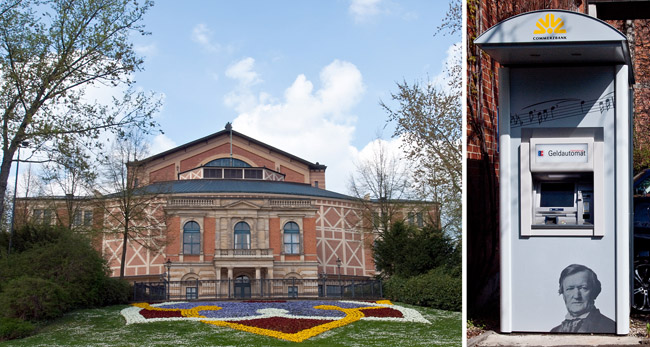 Clues: The picture to the left shows one of the best known opera houses in the World. The picture on the right shows the unusual branded ATM outside the opera house.
Clues: The picture to the left shows one of the best known opera houses in the World. The picture on the right shows the unusual branded ATM outside the opera house.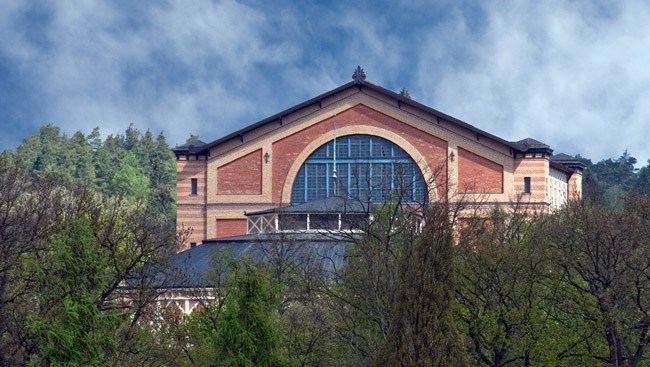 The first correct answer out of the hat after I return (July 21st) wins a No-Prize…
The first correct answer out of the hat after I return (July 21st) wins a No-Prize…![]()

